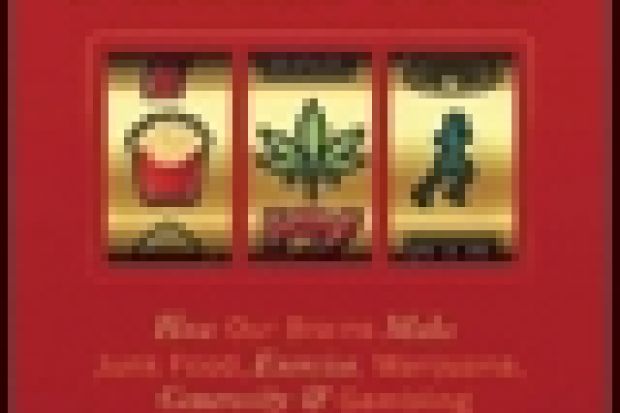Neurophysiologist David Linden's new book has a subtly different title for the US market: The Compass of Pleasure: How Our Brains Make Fatty Foods, Orgasm, Exercise, Marijuana, Generosity, Vodka, Learning, and Gambling Feel So Good. It isn't quite clear why UK readers should be deprived not only of sex and alcohol, but also learning. On the other hand, it is encouraging that we should be credited with generosity. In either version, however - and this is Linden's central message - it is our brains that make "us" feel good.
Linden is not alone in making this type of essentialist assumption. The weird locution - "it was not me; it was my brain that made me do it" - is increasingly used by neuroscientists who are sure that human thought and action are reducible to brain processes, and by legal defence teams pleading diminished responsibility for their clients. The trouble is that this way of speaking - and thinking, if such a term remains permissible - leaves unresolved who is the "me" that the brain drives.
That said, there is strong evidence from both animal and human brain imaging studies, ably marshalled by Linden, that there are key circuits in the brain that are engaged when we experience pleasure. Rats with electrodes implanted in one staging point in the circuit, the ventral tegmental area (VTA), will, given the opportunity, shock themselves repeatedly via the electrodes, even at the expense of food, drink or sex. Humans whose VTA is stimulated report experiencing intense, if ill-defined, pleasure. The VTA has connections to other key brain regions - the hippocampus, amygdala and prefrontal cortex - that are known to be involved in learning, memory and emotion.
For Linden, these constitute a "pleasure circuit". Many of the neurons within it are activated by the neurotransmitter dopamine. The highs provided by drugs such as cocaine are assumed to be mediated through their effects on dopamine neurotransmission. Repeated activation of the circuits, however, can lead to changes in the efficacy of the transmitter and even structural changes in the neuronal connections within the circuit - understood as providing the neuronal substrate for learning and memory. These modifications can turn pleasure into addiction.
Chapter by chapter, Linden reviews the evidence - sometimes strong, sometimes more tenuous - that the pleasures provided by drugs such as marijuana, fatty and sweet foods, sex, gambling and even charitable giving, involve activating the VTA and hence the pleasure circuit. This isn't an arid text, however: he wears his learning lightly. Chattily written (too chattily for this rather staid English reviewer's taste), the book is interspersed with anecdotes apparently drawn from Linden's own life experience, making clear that the pleasures he describes are not limited to his laboratory.
In the final chapter, he engages with and comprehensively demolishes the science-fiction claims of fantasy-futurologists such as Ray Kurzweil that in future the elision of nanotechnology and robotics will provide technologies that will enable us to bypass all these classical providers of pleasure by directly stimulating our own brains. As Linden insists - and I could not agree more strongly - the recent expansion of brain research has led to a huge increase in neuro-information, but no real increase in understanding. Neuroscience is data rich and theory poor.
So far, so good. However, I am still uneasy about Linden's philosophical reductionism. As I hope he would agree, showing that a brain circuit is required for a particular experience is not the same as saying that the circuit, or its activation, is the experience. First, brain imaging studies show that many different regions of the brain are engaged in the response to any particular experience, from viewing an evocative photograph to solving a mathematical puzzle. One of the paradoxes that has emerged from the imaging studies is that the brain correlates of experience seem to be both localised and non-localised.
But more fundamentally, reducing pleasure to brain circuitry loses the essential quality of that pleasure. Chinese and Italian cuisine may both provide pleasure but the experiences are very different. Getting drunk on cheap cider is not the same experience as enjoying the equivalent quantity of alcohol in fine wine. And, I would suspect, achieving orgasm with a loving partner is not the same experience as paying a sex worker. Linden is too good a neuroscientist not to recognise this, but I fear that in the drive to popularisation he has blunted his critical edge.
Pleasure: How Our Brains Make Junk Food, Exercise, Marijuana, Generosity and Gambling Feel so Good
By David J. Linden
Oneworld, 256pp, £10.99
ISBN 9781851688241
Published 9 June 2011
